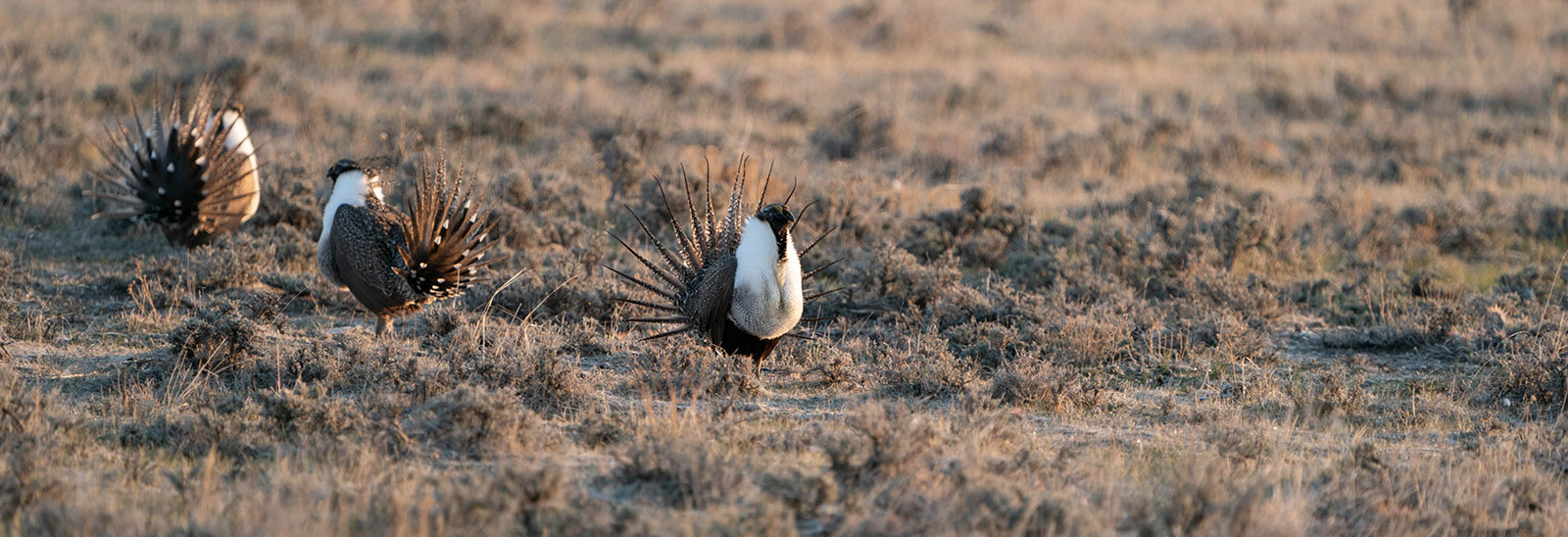
Back Cast
More than a century ago when it was reported that he was seriously ill and maybe dead, Mark Twain replied to the rumor that “the reports of my death are greatly exaggerated.”
Those same words, 128 years later, can be applied to published accounts earlier in summer that sage grouse in southwestern North Dakota are extinct.
Although Game and Fish Department biologists counted zero males on leks in spring 2025, an unfortunate first since the beginning of survey work in the 1950s, the Bureau of Land Management did observe a hen on a former lek. And Game and Fish also received verified observations of individual sage grouse remaining in Bowman County, according to Jesse Kolar, Game and Fish Department upland game management supervisor.
“Sage grouse certainly aren’t completely extinct nor extirpated, the more appropriate term for a population blinking out from a portion of the range,” Kolar said.
Historically, Department personnel found over 40 unique sage grouse lekking locations in the western part of the state, many of which were used year after year.
“The most unique leks used in a single year was 22 in the early 1980s, which coincided with intensive helicopter lek searches. We found sage grouse males on 15-20 leks following that period until 2009,” Kolar said. “In the early 1980s, we were counting 276-350 male sage grouse annually. Our peak was recorded in 1953, when biologists counted 533 males on 17 leks.”
While sage grouse numbers have declined slowly in the state since the 1950s, the declines became more precipitous around 2007, and the population ceased the cyclical pattern of peaks and troughs.
“Based on the steady declines since 2007, our population has probably not been self-sustaining for nearly 20 years. Most people familiar with sage grouse and sagebrush habitat loss should be surprised that our population lasted as long as it did, and this zero count of males has been foreseen for some time,” Kolar said. “That’s why we attempted a Hail Mary translocation project from 2017-21, hoping to slow the bleeding. Ultimately, it showed that it would take much larger efforts to reverse population declines, including large-scale sagebrush habitat projects and continued translocations.”
Currently, since zero breeding males were documented in spring, Kolar said southwestern North Dakota’s sage grouse population is now made up primarily of straggling individuals, or those wandering through from Montana or South Dakota populations in proximity to our state border, which are also declining.
In 2024, I encountered one of these straggling individuals just across the North Dakota border in Montana where I was able to sneak within 50 yards of a lone male.
I wrote: “Through binoculars at this range, it appears as if the bird is dancing at my feet, strutting just for me … And, in a sense, it is because the big male, driven by photoperiod and the instinctive need to mate, to help perpetuate this centuries-driven ritual, sadly has the entire dance floor to himself.”
The sage grouse dance floors in southwestern North Dakota are empty, or nearly so, for a number of reasons, including disease and the fragmentation of sagebrush habitat caused by human development. These birds, it’s long been understood, are fundamentally tied to great big areas of predominantly undisturbed sagebrush and grasslands. Because so little of this habitat exists today, Kolar isn’t holding his breath for this iconic bird.
“Instead of holding on to false hope for sage grouse ever coming back, it’d be more practical to focus on the same pattern — lower peaks and deeper troughs — that is currently occurring for our more widespread, grassland-dependent species like sharp-tailed grouse, pronghorn, and nongame species like chestnut-collared longspurs and Western meadowlarks … We should protect what we have left for those species,” Kolar said.

